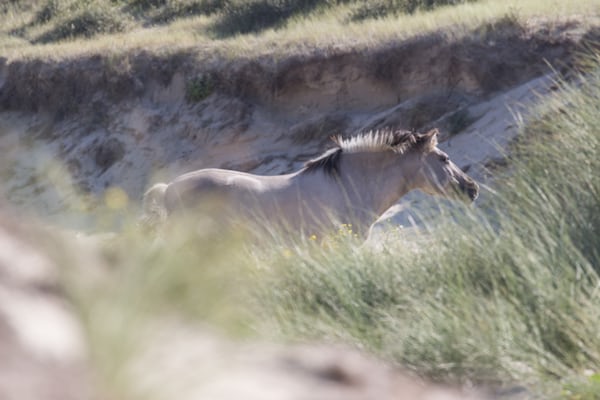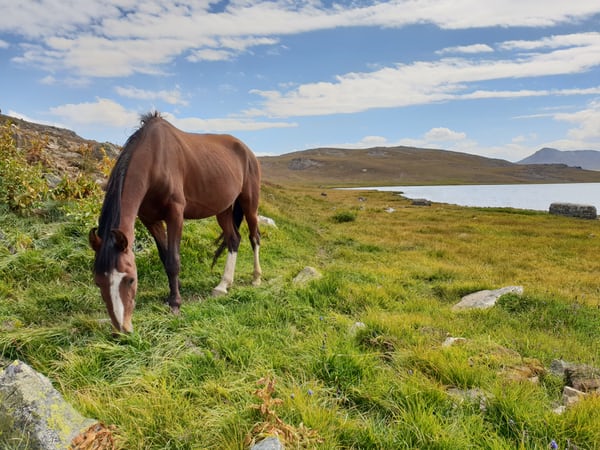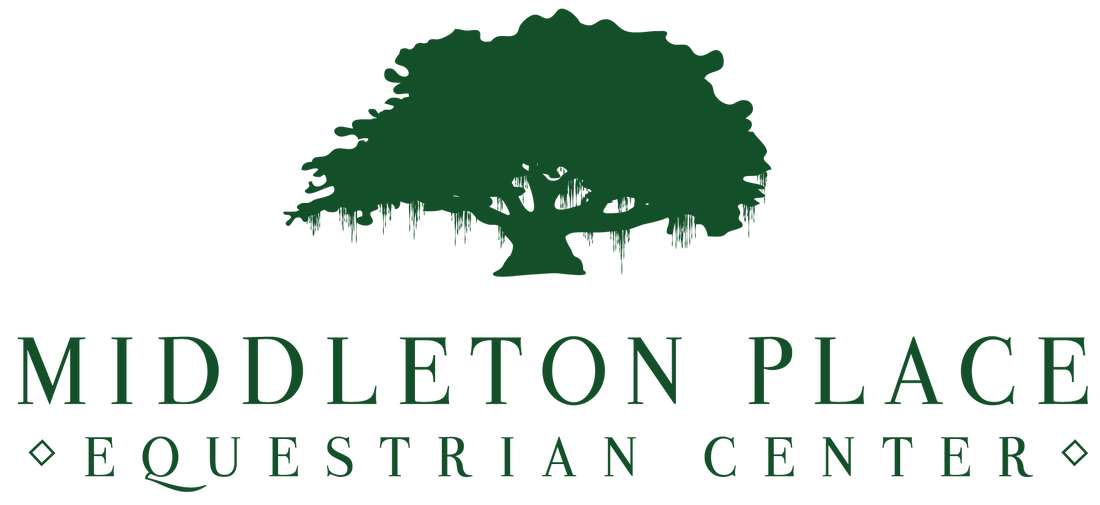|
What are the Corolla Wild Horses and where did they come from?
All of us here at Middleton have always known that there was something very special about the beautiful and majestic horse - and the beautiful beaches that line the coast of the Lowcountry and her sister states. So, what happens you combine the two? Something truly spectacular. If you have ever traveled a little north of the Lowcountry and into the Outerbanks, you might have heard about the Corolla Wild Horses, a herd of very special horses that come from a mysterious and long line of majestic ancestors. The Corolla Wild Horses are such a special attraction and are so beautiful because they are such a mystery. How did they get to this side of the world and who introduced them into the wild? Today around 400 wild horses making up several different herds that live on the North Carolina stretches of the Outerbanks. They can be spotted between Cape Lookout and Corolla. These incredible animals have survived hurricanes, human settlers, and everything else in between. Even though these horses are wild now, they are descendants of domesticated horses. Many historians believe they are direct ancestors of the Spanish Mustang. But really, how did they arrive here? During the days of early exploration and settlement from Europe to the America Colonies, many Spanish ships were caught in the dangerous shallows along the Outerbanks called the Graveyard of the Atlantic. Many Spanish ships that were attempting to come to the early colonies and sunk in this graveyard have been found, many dating back to the early 1500s. The Corolla's ancestors could have come from any of these ships because don't forget - horses can swim. They could have been on these ships and have swum to shore after they sunk and took refuge in their new surroundings. But more likely, the Corolla are descended from Spanish Mustangs that were left behind by Spanish Settlers who had to abandon them and head back to their ships after being threatened by Native Americans, sickness, or failure to settle successfully. But let's dig a little deeper into their mystery shall we? As I stated above, the history of these horses dates back almost 500 years, making them the oldest settlers in the Outerbanks. The Native Americans are the only other group that is older to American soil than these majestic creatures that first called this land home. Spanish settlers probably brought these horses to our shores, but when? What explorations? One of the first possibilities is that they could have arrived in 1521 with some of the very first explorers to the coastline with Lucas Vasquez de Allyon, a Spanish Explorer. Some speculate that this exploration party landed near Cape Fear and made it as far down in their journey as the Outerbanks. The Native Americans were not thrilled about these new visitors and were not welcoming to them at all. They killed them or forced these explorers to leave quickly and retreat to their ships and leave behind their livestock and crude settlements. There is some thought that the Corolla horses started their lineage here, as their ancestors would have been the livestock left behind. A second, more plausible option, happened 60 years later as Richard Greenville was making his expeditions along the North Carolina Coast. His commander, Sir Walter Raleigh, made regular trips along with the West Indies to the early colonies of North Carolina and Virginia to deliver goods to its settlers and had Greenville many of these trips himself. In 1587, Greenville was leaving the West Indies set to deliver goods for his commander to the colonies. Greenville, as historical records go, hit trouble along Cape Fear and then again when the ship hit the shallow waters in the Graveyard of the Atlantic in an area called Diamond Shoals. At least one of the ships that was lost during these troubles contained live wild stock. The animals that survived the sinking could have swum and made it to shore. Some of these animals were also believed to have been the Spanish Mustangs. Even though these two historical options are the most documented options, these are plenty of other speculations. But no matter their origin, the mystery of their appearance has been one of their biggest assets. After having been undisturbed for almost 400 years, the herd was almost pushed to extinction in the late 1980s and early 1990s. The herd hit a record low of 40 horses due to inbreeding, eating bad food, and being hit by vehicles. The herd was moved to a more stable beach that could support their needs and promote their growth. But now, thanks to being protected by the National Park Service, the state of North Carolina, and by private funds and sanctuaries, they are ensured to remain for many more generations to come. They are an amazing gem, and truly something special to behold. Now, with a rich history and healthy numbers - the Corolla Wild Horses will remain a beautiful staple of the Outerbanks. If you have the opportunity to encounter them, take the chance. You won't want to miss out on seeing these myster
3 Comments
Horses are incredible gifts to us in many ways. But outside of riding them on trails like we have at Middleton, what other resources do horses offer us?
Majestic, strong, beautiful creatures. Those are just a few words that describe these beautiful animals we call Horses. They have always given so much to us, and still continue to do so every day. They bring such joy to our riders who enjoy our trails every day, and for centuries have provided transportation and help to farmers, builders, businessmen, and more. But with the dawning of technology and their uses in transportation and daily life growing less and less - what have these beautiful creatures been doing to help us? A lot more than you would think! Every day they give back to us and the planet and are one of the biggest contributors to keeping our ecosystem and our planet healthy, clean, and functioning. When it comes to trails and trail riding, horses automatically give back to the environment and your safety. For any park, nature preserve, or historical lands horseback riding saves the land from human damage. Horseback riding is low energy and a low impact on the world around you. People can trample through areas and destroy so much precious vegetation or delicate landmarks without even knowing it. Horses can be trained to walk around and guide their riders to see these beautiful areas without touching them - keeping them safe and intact. You can see the world around you without harming it, reducing any footprint a human leaves behind. Horses are also much safer than hiking alone through the woods. The sounds and vibrations a horse makes naturally when walking are calming and common to many animals found in nature. Many dangerous animals to humans, including snakes and bears, will not react to their presence like they would a human. You are dramatically reducing the rate of getting bit, attacked, scratched, or put in danger all while riding a horse. Since these animals are not bothered or scared away from their natural habitats when we are on horseback - it keeps them in their environment and homes where they should be. This helps keep the ecosystem in balance and keep the wildlife intact. Wild horses give so much to the world around them too and they are known as nature's healers. Where ever they roam and graze, they help the world around them rebuild and continue to flourish, and help the ecosystem thrive just like owned horses. A wild horse can break through the ice of lakes and streams so animals who don't have the power to do so can reach a water source in the wintertime. Horses are also one of the biggest contributors to renewable energy and resources. Horses produce up to 9.1 tons of manure every year, and this manure can be turned into green energy for the farms it's created on or for energy companies around these farms. If the farm itself doesn't want or doesn't have the resources to turn their manure into power - the manure can be sold off to companies that can, which brings revenue to the farm itself. But, if the farm does have these resources the power it creates can be sold off and become another form of revenue. Horse manure can also be turned into safe and clean fertilizers, much quicker and safer than factory-made fertilizers. A lot of farms have the resources to turn manure into fertilizers on their property and can get it to their fields and crops much faster than factory-made fertilizer. They also have the opportunity to sell it for yet another form of revenue for the farm. Fertilizers made from horse manure have a lot of wonderful benefits for the world around it. It's made to prevent air and water pollution and can be used in fields close to water sources or in areas that have large amounts of runoff from fields into streams. It also improves soil quality and productivity. It increases the number of nutrients in the soil, keeping it healthier and creating a better ecosystem for plants to grow in. Higher productivity leads to more growth of grass and vegetation which prevents erosion and prevents the growth of brush. Without this brush, the chances of wildfires spreading or happening decreases dramatically. Horses also help preserve grasslands. If a farmer practices rotational grazing, this prevents overgrazing and promotes grass to keep growing. With grass still in the grazing fields from rotational grazing, this also prevents erosion and promotes healthy growth of vegetation in these fields for years to come. Rotational grazing also allows manure to decompose. The broken-down manure provides incredible nutrients to the soil. Other forms of grasslands like pastures, farms, trails, and other green spaces that horses call home are also home to a lot of other wildlife. Keeping these spaces healthy and safe for horses provides a healthy and safe home for other animals and vegetation. Habitats of many animals are maintained through horses grazing patterns. Tall grasses and plants left uneaten by a horse, hide and protect larger animals. Whereas shorter grasses eaten by horses protect smaller animals who need this grass to hide from predators. A well cared for pasture can retain at least 70% ground cover all year, unlike cropland. Rotating these lands and keeping them well cared for protects not only your horses but also your farm's well being, and the ecosystem around it. Most horse farmers utilize trough watering for their animals. This promotes the protection and safety of natural water sources like lakes, streams, and ponds. It prevents erosion along the edges of these water sources and keeps them flowing naturally. Horses are being used to not only keep their farms and pastures healthy and flourishing, but they are also being used in the conservation of parks, green spaces, and rural landscapes. These horses are inspiring these areas to grow back or continue growing healthily. Horses also spread seeds while grazing just like birds do. Once they are passed through their digestive system, they are left behind to grow in very fertile land. Horses are also very picky about what they eat. They will eat grass and weeds, making way for other plants to grow and thrive and kill off weeds that are harmful to their growth. They will also naturally trample unwanted weeds and plants that are harmful to the growth of healthy grass and plants too. Horses aren't just beautiful to watch and fun to ride, horses are helping the planet grow and stay healthy every day. From farms to trails like you can find at Middleton, horses are keeping your world healthy and safe. Come visit us and enjoy taking part in this wonderful circle of life. |
AuthorMiddleton Place Team Archives
January 2021
Categories
All
|
|
4280 Ashley River Road, Charleston, SC 29414
[email protected] 843-735-0709 Please also visit: Middleton Place | The Inn at Middleton Place |
Site powered by MadeSimply
|


 RSS Feed
RSS Feed

